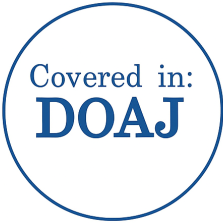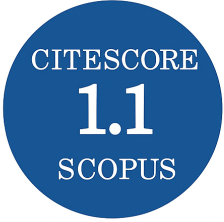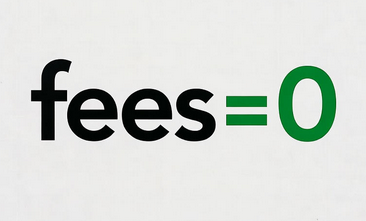Evaluation of Military Logistics Vehicles in Public Procurement
DOI:
https://doi.org/10.3849/aimt.01737Keywords:
evaluation criteria, military logistics vehicles, public procurementAbstract
The current geopolitical situation in the Europe is forcing some countries to modernize the equipment and armaments of their armies and to prepare for response to potential threats. It is difficult to assess the advantageousness and quality of military logistics vehicles to be purchased when there are different perceptions of the functionality of the product among future users, and in particular when the quality assessment tools are not perfect and the available and statutory quality assessment tools are hardly used in tendering procedures. This article presents the methodology for the evaluation of military logistics vehicles in public procurement. The proposed methodology allows comparing military logistics vehicles on the basis of economic and technical criteria and assessing the needs of different users.
References
XI-1491. Law of the Republic of Lithuania on Public Procurement in the Field of Defense and Security (in Lithuanian) [online]. Vilnius: Valstybės Žinios, 2011. [viewed 2022-01-12]. Available from: https://www.e-tar.lt/portal/en/legalAct/TAR.E838D0C06065
GARVIN, D.A. Managing Quality: The Strategic and Competitive Edge. New York: Free Press, 1988. ISBN 978-0-02-911380-6.
ZHANG, B., Y. LE, B. XIA and M. SKITMORE. Causes of Business-To-Government Corruption in the Tendering Process in China. Journal of Management in Engineering, 2017, 33(2). DOI 10.1061/(ASCE)ME.1943-5479.0000479.
BUURI, J.M. Factors Affecting Implementation of Open Tendering Process in Public Institutions. In: Proceedings of 1st JKUAT-SHRD Research Conference. Juja: JKUAT, 2016.
AL-HAMMADI, S. An Investigation into Current Tendering Process in Saudi Construction Projects. In: 5th International/11th Construction Specialty Conference. Vancouver: University of British Columbia Library, 2015. DOI 10.14288/1.0076378.
TARKKANEN, K. and V. HARKKE. Evaluation for Evaluation: Usability Work during Tendering Process. In: Proceedings of the 33rd Annual ACM Conference Extended Abstracts on Human Factors in Computing Systems. New York: Association for Computing Machinery, 2015. DOI 10.1145/2702613.2732851.
MALI, D., D. MOGAVEERA, P. KITAWAT and M. JAWWAD. Blockchain-Based E-tendering System. In: 4th International Conference on Intelligent Computing and Control Systems (ICICCS). Madurai: IEEE, 2020. DOI 10.1109/ICICCS48265.2020.9120890.
ACT No. 134/2016 Coll. on Public Procurement [online]. 2016. [viewed 2022-01-20]. Available from: https://www.uohs.cz/en/legislation/public-procurement.html
V-1111. Regarding the Approval of the Description of the Procedure for the Preparation, Coordination and Approval of Operational Requirements Documents (in Lithuanian). Vilnius: Valstysty Žinios, 2010.
FURCH, J. and V. KONEČNÝ. Product and its Life Cycle Cost Analysis. In: Proceedings of 25th International Scientific Conference. Transport Means 2021. Kaunas: Kaunas University of Technology, 2021, pp. 677-683. ISSN 1822-296X.
IEC 60300-3-3 Ed. 3.0 b:2017. Dependability Management - Part 3-3: Application Guide - Life Cycle Costing.
FURCH, J. and V. KONEČNÝ. Model Design of the Life Cycle Cost Analysis for the Acquisition of a Motor Vehicle. In: Proceedings of 25th International Scientific Conference. Transport Means 2021. Kaunas: Kaunas University of Technology, 2021, pp. 1181-1187. ISSN 1822-296X.
Wong, J.Y. Theory of Ground Vehicles. 4th ed. New York: Wiley, 2008. ISBN 978-0-470-17038-0.
MURO, T. and J. O´BRIEN. Terramechanics: Land Locomotion Mechanics. Cleveland: CRC Press, 2004. ISBN 0-367-39460-X.
WONG, Y.C.D., H.H.S. LIM and W.Q.W. CHAN. An Assessment of Land Vehicles’ Trafficability [online]. 2016 [viewed 2022-05-18]. Available from: https://www.dsta.gov.sg/docs/default-source/dsta-about/an-assessment-of-land-vehicles-trafficability.pdf?sfvrsn=2
ADNER, R. Match Your Innovation Strategy to Your Innovation Ecosystem [online]. 2006 [viewed 2022-05-05]. Available from: https://hbr.org/2006/04/match-your-innovation-strategy-to-your-innovation-ecosystem
JAVANSHIR, I., A. MASELENO, S. TASOUJIAN and M. OVEISI. Optimization of Suspension System of Heavy Off-Road Vehicle for Stability Enhancement Using Integrated Anti-Roll Bar and Coiling Spring Mechanism. Journal of Central South University, 2018, 25, pp. 2289-2298. DOI 10.1007/s11771-018-3913-6.
ČIOČYS, P.A. Encyclopedic Dictionary of Warfare (in Lithuanian). Vilnius: General Jonas Žemaitis Military Academy of Lithuania, 2020. ISBN 978-9955-423-66-9.
STANAG 4357, Allied Vehicle Testing Publication, 1991.
MENGERT P., S. SALVATORE, R. DISARIO and R. WALTER. Statistical Estimation of Rollover Risk [online]. 1989 [viewed 2022-04-09]. Available from: https://rosap.ntl.bts.gov/view/dot/8620
STANAG 4569, Protection Levels for Occupants of Armoured Vehicles, 2022.
DOBRŽINSKIJ, N. Study of the Diesel Engines Operating in the Difficult Conditions [PhD Thesis]. Kaunas: Technological Sciences, 2013.
DENNING, R. Applied R&M Manual for Defence Systems [online]. 2012 [viewed 2022-05-07]. Available from: https://sars.org.uk/BOK/Applied%20R&M%20Manual%20for%20Defence%20Systems%20(GR-77)/p0c00.pdf
VELASQUEZ, M. and P.T. HESTER. An Analysis of Multi-Criteria Decision Making Methods [online]. International Journal of Operations Research, 2013, 10(2), pp. 56-66. [viewed 2022-04-15]. Available from: https://citeseerx.ist.psu.edu/viewdoc/download;jsessionid=264AD33AC8E50804E2A43E6533935911?doi=10.1.1.402.1308&rep=rep1&type=pdf
SAATY, T.L. A Scaling Method for Priorities in Hierarchical Structures. Journal of Mathematical Psychology, 1977, 15(3), p. 234-281. DOI 10.1016/0022-2496(77)90033-5.
SAATY, T.L. How to Make a Decision: The Analytic Hierarchy Process. European Journal of Operational Research, 1990, 48(1), pp. 9-26. DOI 10.1016/0377-2217(90)90057-I.
SAATY, T.L. The Analytic Hierarchy and Analytic Network Processes for the Measurement of Intangible Criteria and for Decision-Making. In: FIGUEIRA, J., S. GRECO and M. EHROGOTT. Multiple Criteria Decision Analysis: State of the Art Surveys. New York: Springer, 2005, pp. 345-405. ISBN 978-0-387-23067-2.
SAATY, T.L. and D. ERGU. When Is a Decision-Making Method Trustworthy? Criteria for Evaluating Multi-Criteria Decision-Making Methods. International Journal of Information Technology and Decision Making, 2015, 14(6), pp. 1171‑1187. DOI 10.1142/S021962201550025X.
JÁNSKÝ, J. and TUŠER, I. Security Management – Quantitative Determination of Crime Risk in a Selected Region: Case Study. In: TUŠER, I. and Š. HOŠKOVÁ-MAYEROVÁ, eds. Trends and Future Directions in Security and Emergency Management. Lecture Notes in Networks and Systems. New York: Springer, 2022, pp. 225-240. ISBN 978-3-030-88906-7.
Downloads
Published
License
Copyright (c) 2022 Advances in Military Technology

This work is licensed under a Creative Commons Attribution-NonCommercial 4.0 International License.
Authors who publish with this journal agree to the following terms:
1. Authors retain copyright and grant the journal right of first publication with the work simultaneously licensed under a Creative Commons Attribution License that allows others to share the work with an acknowledgement of the work's authorship and initial publication in this journal.
2. Authors are able to enter into separate, additional contractual arrangements for the non-exclusive distribution of the journal's published version of the work (e.g., post it to an institutional repository or publish it in a book), with an acknowledgement of its initial publication in this journal.
3. Authors are permitted and encouraged to post their work online (e.g., in institutional repositories or on their website) prior to and during the submission process, as it can lead to productive exchanges, as well as earlier and greater citation of published work.
Users can use, reuse and build upon the material published in the journal for any purpose, even commercially.






